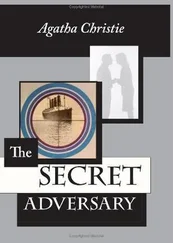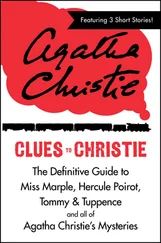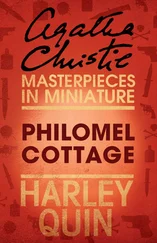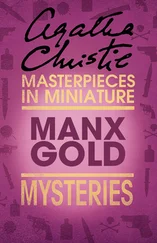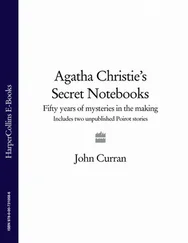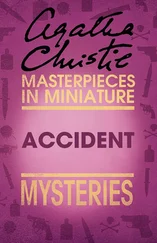Spider’s Web is full of ideas from earlier works:
 Miss Peake hides the body across the top of the spareroom bed under the bolster, as does the villain in ‘The Man who was No. 16’, the final story in Partners in Crime.
Miss Peake hides the body across the top of the spareroom bed under the bolster, as does the villain in ‘The Man who was No. 16’, the final story in Partners in Crime.
 The missing playing card is a plot device of ‘The King of Clubs’.
The missing playing card is a plot device of ‘The King of Clubs’.
 The idea of valuable stamps on an envelope appears in ‘Strange Jest’.
The idea of valuable stamps on an envelope appears in ‘Strange Jest’.
 Pippa’s creation of a wax doll is the same course of action as Linda Marshall followed in Evil under the Sun.
Pippa’s creation of a wax doll is the same course of action as Linda Marshall followed in Evil under the Sun.
 Clarissa taking responsibility for the murder when it seems as if Pippa is responsible has echoes of Caroline Crale’s actions on behalf of her sister, Angela, in Five Little Pigs.
Clarissa taking responsibility for the murder when it seems as if Pippa is responsible has echoes of Caroline Crale’s actions on behalf of her sister, Angela, in Five Little Pigs.
 ‘The Adventure of the Cheap Flat’ also has the ploy of a property made available at a discount price to the right person.
‘The Adventure of the Cheap Flat’ also has the ploy of a property made available at a discount price to the right person.
 There is also yet another clever variation on a clue involving names (see A Murder is Announced, Mrs McGinty’s Dead and Peril at End House).
There is also yet another clever variation on a clue involving names (see A Murder is Announced, Mrs McGinty’s Dead and Peril at End House).
 There are sly references to Ten Little Nigger Boys [sic] in Act II, Scene ii, and to a ‘body in the library’ in Act I.
There are sly references to Ten Little Nigger Boys [sic] in Act II, Scene ii, and to a ‘body in the library’ in Act I.
Points
A. Miss Peake is on spare room bed
B. Miss Peake appears—‘the body’s disappeared’—she winks
C. Sir M says—‘never grown up’ [Act I]
D. Inspector and Sir M—Latter puts forward idea of narcotics [Act II, Scene ii]
E. Inspector suggests he had actually found something in desk [Act II, Scene ii]
F. Clarissa (to Sir M) did one of you move it? No—all herded together in dining room
G. CI. asks Sir M (or Hugo) name of antique dealers
H. The book—Sir M says ‘What’s the Inspector consulting—Who’s Who’ [Act II, Scene ii]
I. Sir M. says story about friend and stamps or envelope with autographs
J. Clarissa asks Elgin about references [Act II, Scene ii]
K. Pippa comes in—terrible yawns—hungry
L. Clarissa accuses Miss Peake of being Mrs. Brown
The main preoccupation for the scenes involving Pippa was the presence or absence, in retrospect for obvious reasons, of Jeremy. These scenes appear in Act I.
The Pippa bits
Recipe book candles, Can you eat it? Present (Sir M Jeremy? Clarissa?)
Priest’s Hole—Place to put a body. Present Jeremy and ? ? ? [sic]
The autographs—Pippa shows them—puts them away in shell-box
Then bit about stamps—Present not Jeremy—others ad lib
One of the interesting items among Christie’s papers is a suggested screen treatment, dated 1956, for a possible film version of this play. It is not entirely certain that it is by Christie herself but it looks ‘unofficial’, i.e. as if done by someone not directly involved in the subsequent 1960 film. It sketches out the events that have taken place prior to the start of the play—Clarissa meeting Henry, Miranda desperate for drugs, the subsequent divorce and remarriage and Pippa’s acceptance of Clarissa; it also includes the sale of a stamped envelope to Mr Sellon…
Dead Man’s Folly 5 November 1956
Mrs Oliver organises a Murder Hunt in the grounds of Nasse House. When the ‘body’ turns out to be only too real, Hercule Poirot is on hand to discover who killed schoolgirl Marlene Tucker and what happened to Lady Folliat.
Although it was published in November 1956, Dead Man’s Folly had a complicated two-year genesis. In November 1954 Christie’s agent wrote to the Diocesan Board of Finance in Exeter explaining that his client would like to see stained glass windows in the chancel of Churston Ferrers Church (Christie’s local church) and was willing to pay for them by assigning the rights of a story to a fund set up for that purpose. The Diocesan Board and the local church were both very happy with the arrangement and in a letter of 3 December 1954 Hughes Massie confirmed ‘Mrs Mallowan’s intentions to assign the magazine rights of a long short story to be entitled The Greenshore Folly’ to such a fund. The amount involved was reckoned to be in the region of £1,000 (£18,000 in today’s value).
By March 1955 the Diocesan Board was getting restive and wondering about the progress of the sale. But for the first time in 35 years, much to everyone’s embarrassment, it proved impossible to sell the story. The problem was its length; it was a long novella, which was a difficult length, neither a novel nor a short story, for the magazine market. By mid-July 1955, the decision was made to withdraw the story from sale, as ‘Agatha thinks [it] is packed with good material which she can use for her next full length novel’. As a compromise, it was agreed that she would write another short story for the Church, also to be called, for legal reasons, ‘The Greenshore Folly’, ‘though it will probably be published under some other title’. So, the original and rejected novella ‘The Greenshore Folly’ was elaborated into Dead Man’s Folly and Christie wrote the shorter and similarly titled ‘Greenshaw’s Folly’ to swell the coffers of the Church authorities. ‘Greenshaw’s Folly’ was first published in 1956 and was collected in The Adventure of the Christmas Pudding in 1960.
Notes relating to Dead Man’s Folly are contained in Notebooks 45 and 47. As a result of its history, it is difficult to tell from the Notebooks whether the notes refer to the novella or the novel version, but it seems likely that Notebook 47 is the original novella and Notebook 45 the elaborated version—Notebook 47 is a discussion of basic points, which would not have been necessary if the story had already been written. In 15 pages Christie sketched the entire plot of ‘The Greenshore Folly’ so when it came to expanding it, she had only to elaborate actual scenes—the plot was already entire from the novella version.
Notebook 47 outlines the basic situation and sketches some ideas, all of which, with minor changes—garden fete rather than ‘Conservation Fete’, Girl Guide victim rather than Boy Scout—were to be included in the story:
Mrs Oliver summons Poirot—she is at Greenway—professional job—arranging a Treasure Hunt or a Murder Hunt for the Conservation Fete, which is to be held there
‘Body’ to be boy scout in boat house—key of which has to be found by ‘clues’
or a real body is buried where tree uprooted and where Folly is to go
Some ideas
Hiker (girl?) from hostel
Next door—really Lady Bannerman [Stubbs]
It is significant that, right from the start, the story was to be set at Greenway. Perhaps because this was a personal project, written for her place of personal worship, Christie was anxious to retain a local flavour. Although she had used Greenway before for Five Little Pigs and would use the ferry at the bottom of the garden in a few years’ time in Ordeal by Innocence, Dead Man’s Folly represents an extended and detailed use of her beloved Greenway. Apart from the house itself, and its history as told by Mrs Folliat, also featured in the story are the Gate Lodge, Ferry Cottage, the Boathouse, the Battery, the Tennis Court and the Youth Hostel next door; and the internal geography of the house reflects reality even down to Poirot’s bedroom and the bathroom across the corridor. The magnolia tree near the front door where Mrs Folliat and Hattie stand to talk, the winding drive ending at the big iron gates, the winding and steep path connecting the Battery and the Boathouse—all these exist to this day.
Читать дальше
Конец ознакомительного отрывка
Купить книгу
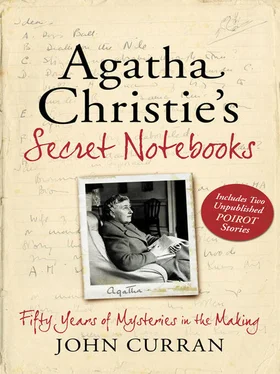
 Miss Peake hides the body across the top of the spareroom bed under the bolster, as does the villain in ‘The Man who was No. 16’, the final story in Partners in Crime.
Miss Peake hides the body across the top of the spareroom bed under the bolster, as does the villain in ‘The Man who was No. 16’, the final story in Partners in Crime.
